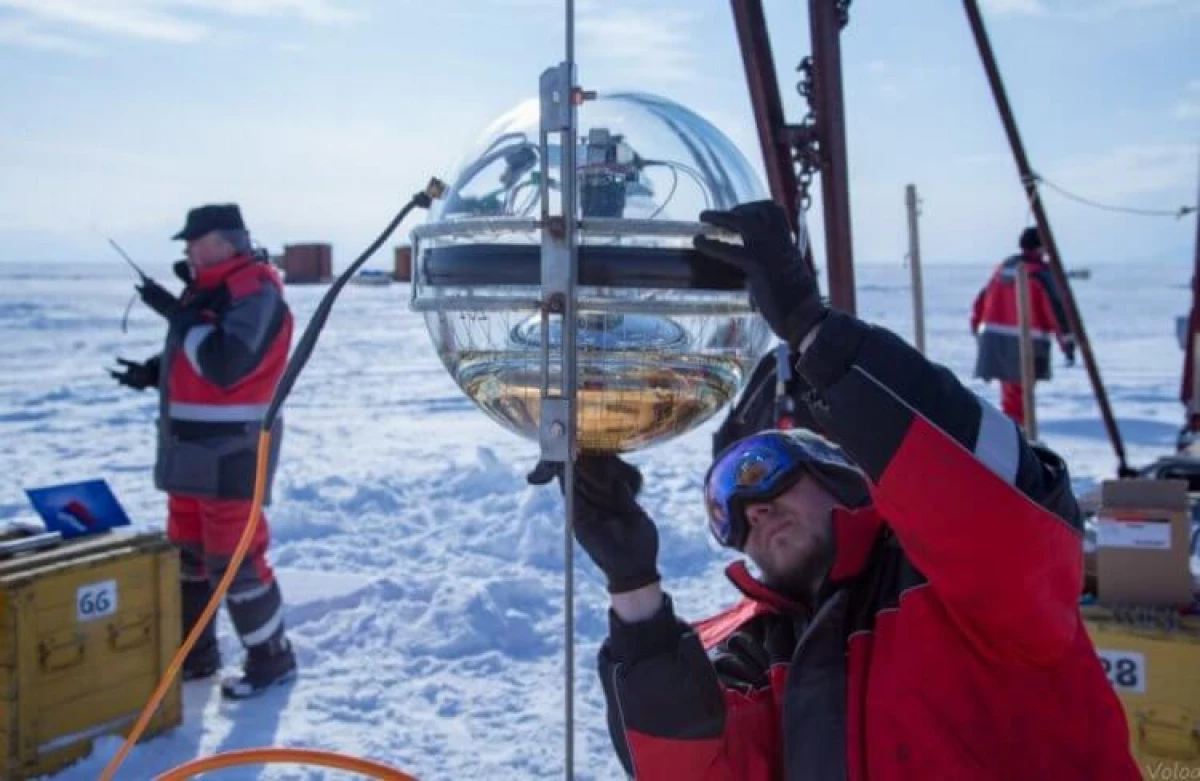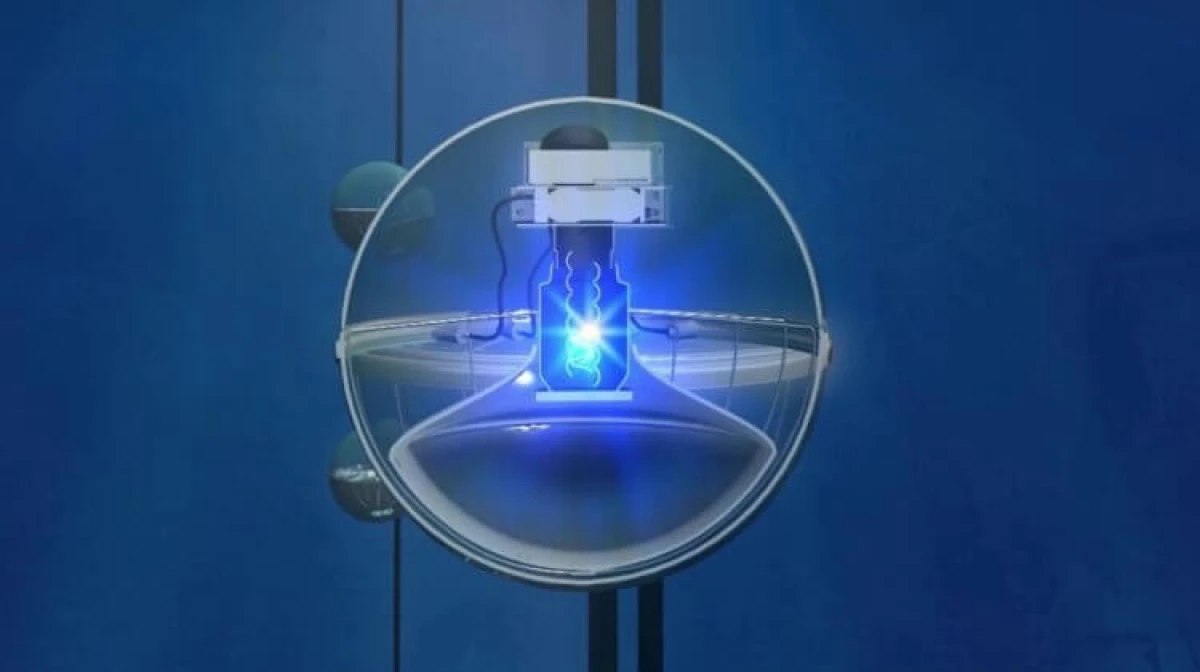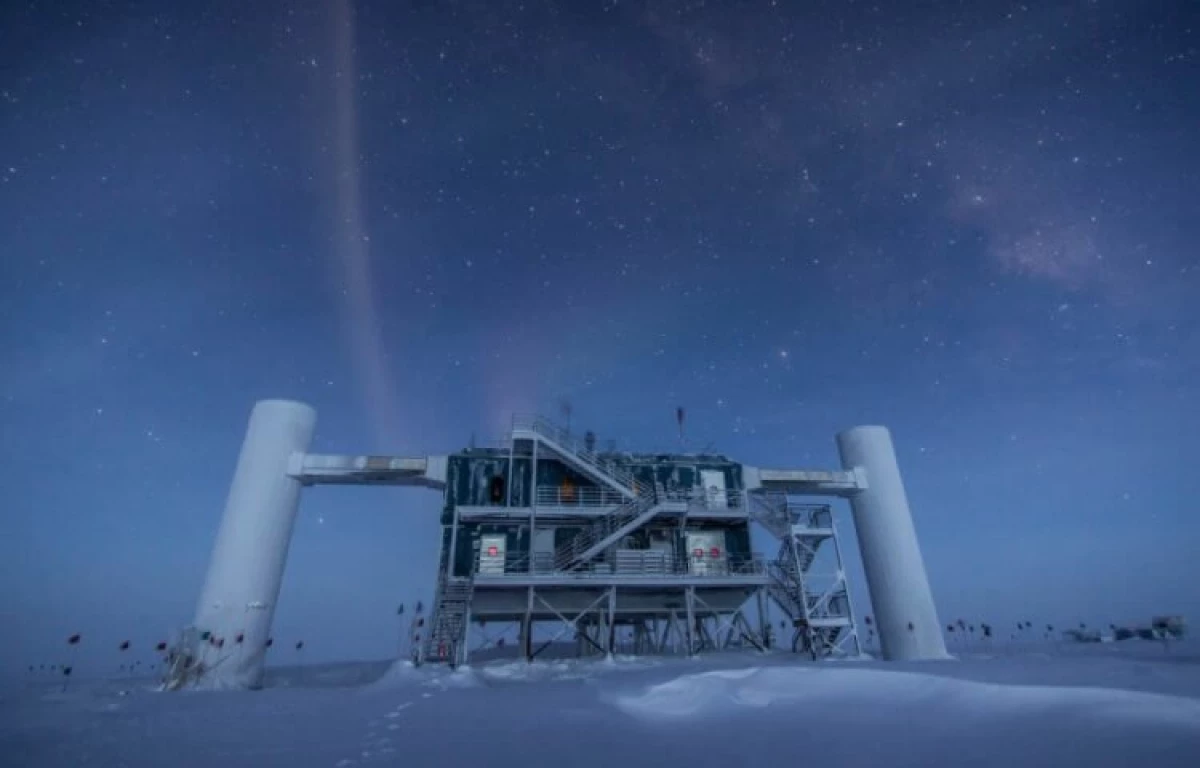On Lake Baikal, Baikal-GVD telescope was earned for trapping neutrino. So the particles that are formed during nuclear reactions and have the ability to penetrate even through the most complex objects. For example, neutrino can pass through a layer of liquid hydrogen thickness in a thousand light years. These particles reach the ground from different parts of the Universe and can tell a lot about the structure and the occurrence of space. However, these particles are very few and to "catch" scientists use a thick layer of ice, and a very large area. Create and maintain a huge pool specifically for the telescope work is very expensive, so scientists use natural reservoirs. We tell how the Baikal-GVD telescope works and why it is needed. As always - only the most important thing you need to know.

What is the Baikal-GVD telescope?
The construction of the Baikal-GVD telescope began in 2015 and it took 2.5 billion rubles. The device consists of a set of deep-water stations and the steel cables attached to the bottom of the Baikal. Stations, referred to as vertical garlands, are held at a depth of about 20 meters with special floats. To the cable, 15 meters from each other, 36 optical modules are suspended. Also, the telescope includes four electronic modules for power supply, data collection, telescope control and other tasks. In addition to all, there are several so-called hydroacoustic modules that are needed to hold optical modules in the desired position. Stations are combined into groups that are connected to the coastal center.

An interesting fact: as the ice is very important for the telescope work, it will be able to work only in winter.
How does the neutrino telescope work?
But the main elements of the telescope are not optical modules, but ice on the surface of the Baikal. The device "catches" the neutrino particles that arrive on the reverse side of the Earth. Particles fly across the entire mantle, core and other planet layers. At one point, the next particle is born - a discharged meson. If the birth occurs in ice, it emits radiation that scientists can catch. As you can understand, it is extremely rare and catch them very difficult. But Baikal has a very large area and the likelihood of ulov increases many times.
Briefly about how Baikal-GVD works
This is not the first neutrine telescope in the world - the largest is located on the territory of Antarctica and is called IceCube. For a long time he was the only one who can not only capture particles, but also to determine the coordinates of their appearance. The accuracy of the neutrino source recognition in the IceCube telescope is 10-15 degrees. But Baikal ice thickness allows you to increase accuracy of up to 4 degrees. In addition, there are no luminous microorganisms and strong water intakes on Baikal, which further contributes to more accurate data.

IceCube and Baikal-GVD telescopes will look at different parts of the sky and thereby complement each other. The Baikal telescope will catch neutrinos that permeate the land from the southern pole and overlooking the northern hemisphere. And the telescope in Antarctica fixes particles that permeate planets from the north and emerging in the south. Thanks to the joint work of telescopes, scientists will be able to observe immediately over a large number of celestial objects. Baikal will be visible to a big bear, and from Antarctica - Magellan clouds.
See also: How do neutrino detectors work?
Why do you need to study neutrino?
Scientists are confident that neutrinos can fly from the depths of born and dying galaxies and carry information about the processes that occur in the universe. There is hope that the study of these particles will help learn more about the evolution of galaxies and other space objects. Also, Russian scientists hope that thanks to neutrinos, they will be able to monitor the pace of thermonuclear processes occurring in the subsoil. However, it is definitely not worth expecting quick results. Experience in using other similar telescopes shows that the detection of particles may take years.

Links to interesting articles, funny memes and many other interesting information can be found on our telegram channel. Sign up!
Other neutrine telescopes are also located on the territory of the Mediterranean, China and Japan. For the first time, neutrino particles were counted in the 1970s, with the help of a telescope in the thickness of the Caucasian Mountain Andyrchi. However, to detect neutrino particles with greater accuracy, cleaner water was needed. It was because of this in 1990 and it was decided to create a telescope on Baikal. Then it was the first version, but now earned more perfect.
